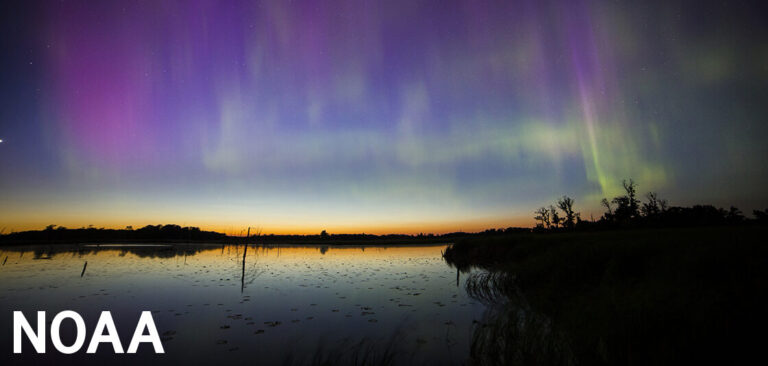The National Oceanic and Atmospheric Administration (NOAA) has forecasted a strong geomagnetic storm after recording several eruptions on the sun.
Geomagnetic storms can affect infrastructure in near-Earth orbit and on the surface, potentially disrupting communications, the electric power grid, navigation, radio and satellite operations. It can also drive the aurora further south from its usual position over the polar region. Auroras for this storm may be visible, if the weather conditions are favorable, as far south as Pennsylvania to Iowa to Oregon.
NOAA’s Space Weather Prediction Center (SWPC) – a division of the National Weather Service – has been monitoring the sun and solar winds following a series of coronal mass ejections (CME) that began at 08:30am EDT on August 14. The space weather forecasters predict a G3 geomagnetic storm on NOAA’s scales, late on August 18, and moderate (G2) geomagnetic storming on August 19. The organization has issued a Geomagnetic Storm Watch through August 19, 2022.
Forecasters are monitoring a small but compact and magnetically complex sunspot grouping designated active Region 3078, currently located just west of the sun’s central meridian in the southern hemisphere. Region 3078 produced frequent flares, including an M5 x-ray flare (R2-Moderate radio blackout) at 03:58am EDT on August 16. M-class flares are still possible from this sunspot region; however, recent imagery indicated possible signs of weakening and potential decay. SWPC forecasters continue to monitor NOAA’s DSCOVR satellite and its real-time solar winds for signs of the arrival and strength of the CMEs and will issue any appropriate geomagnetic storm warnings once data is received.



